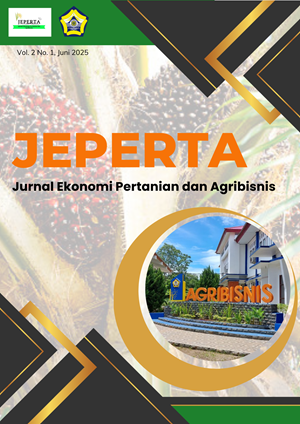Abstract
This paper aims to estimate the demand for rice and other staple
foods among the urban households and analyze the potential for rice
substitution with these staple foods. The estimation uses the
Quadratic Almost Ideal Demand System (QUAIDS) model and
microdata from the SUSENAS 2022 Bengkulu. We estimate five
staple foods: rice, potatoes, wheat, cassava, and corn. The results
show that, in Bengkulu City, rice stands as the staple food with the
highest share of consumption expenditure, reaching 90.04%, while
maize exhibits the lowest share at 1.31%. The prominence of rice
consumption is striking, even when compared to potatoes, which
have a relatively similar price per kilogram. Rice also has the most
elastic expenditure elasticity. The own-price elasticity of rice is
elastic when estimated using the Marshallian elasticity but inelastic
using the Hicksian elasticity. However, both own-price elasticities
of potatoes, wheat, and cassava are elastic. Cross-price elasticities
show that rice could be substituted by potatoes, wheat, cassava, and
corn. This finding implies that these staple foods can play a
significant role as alternative carbohydrate substitutes for rice
in the urban area.

